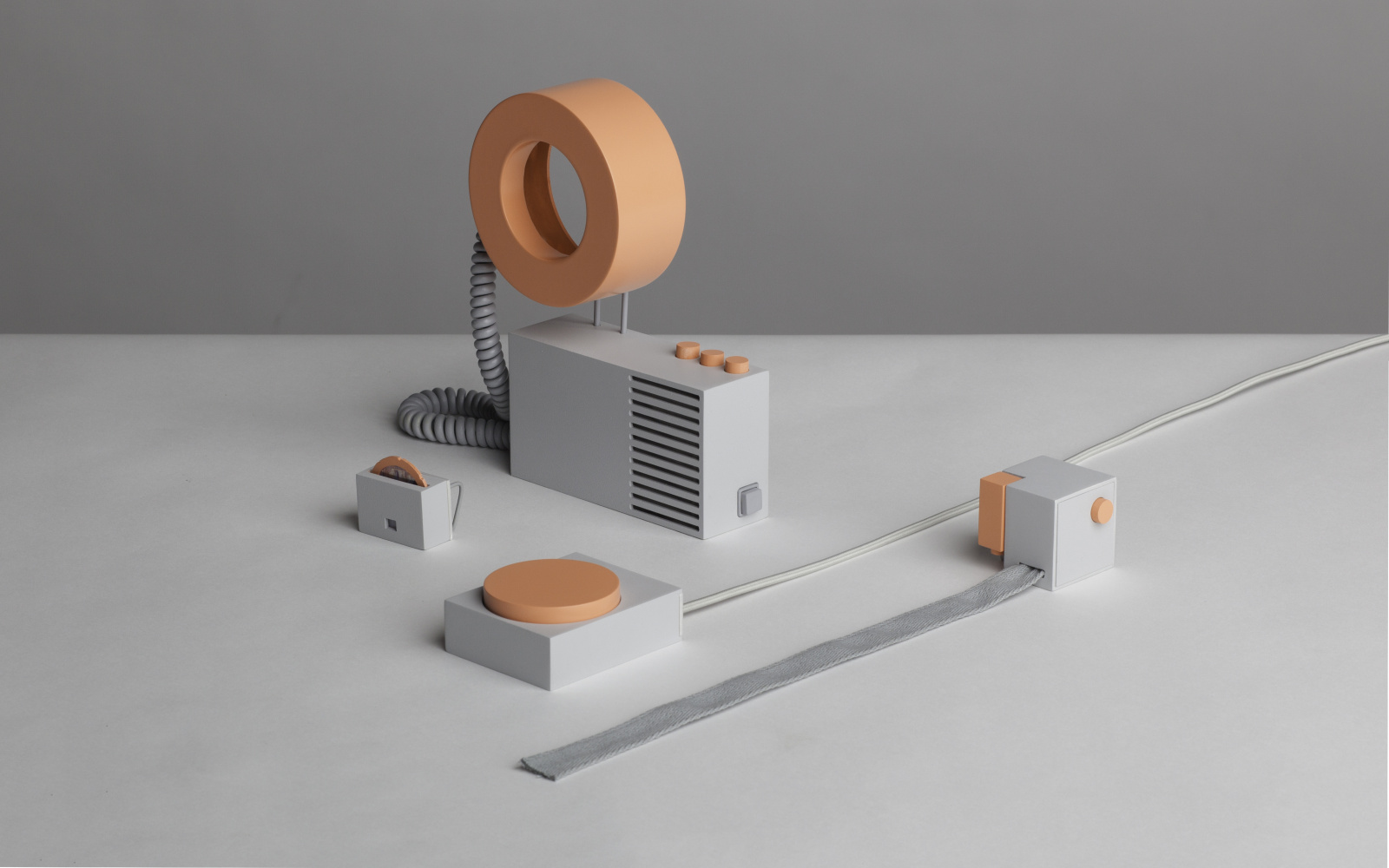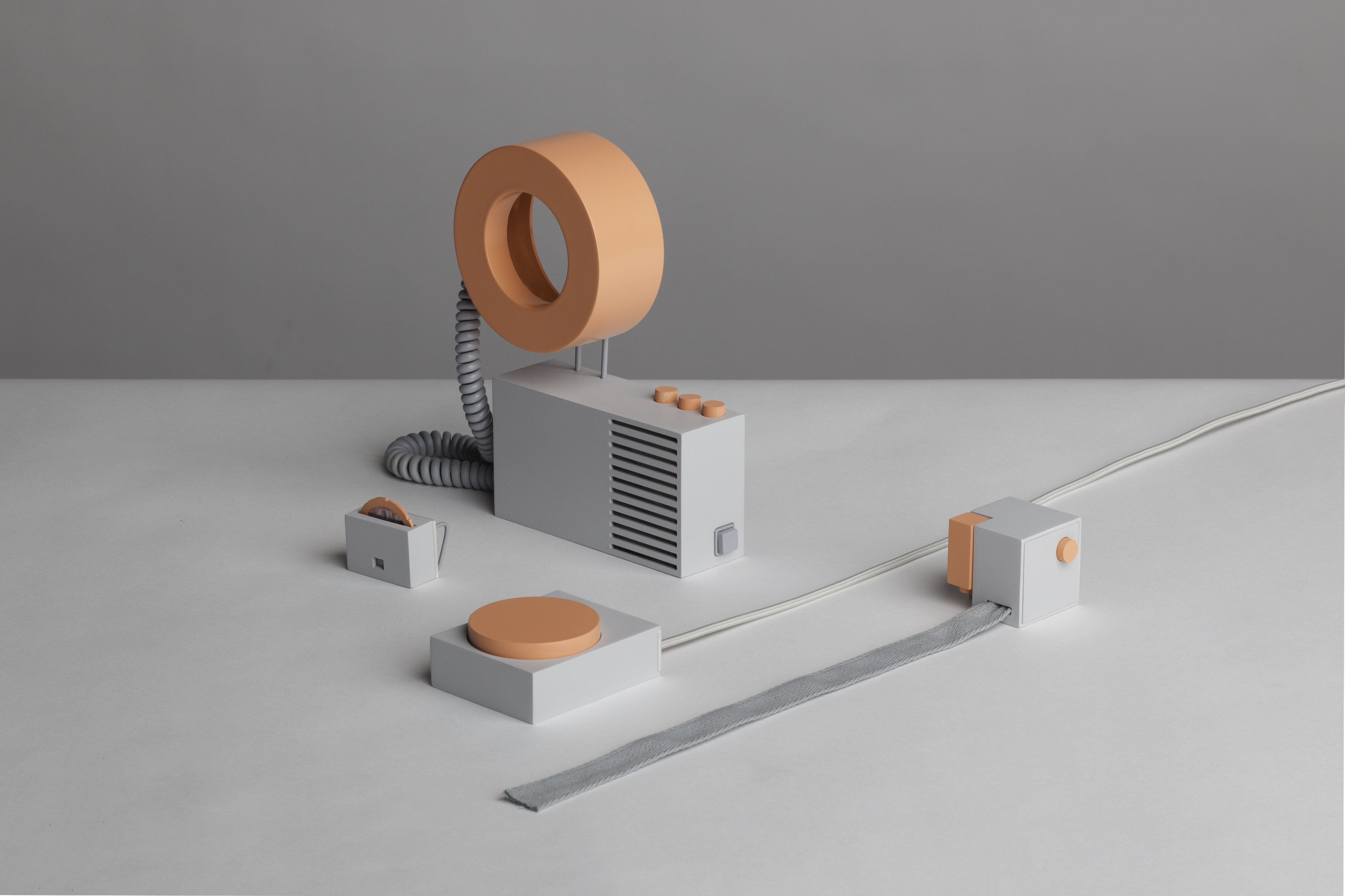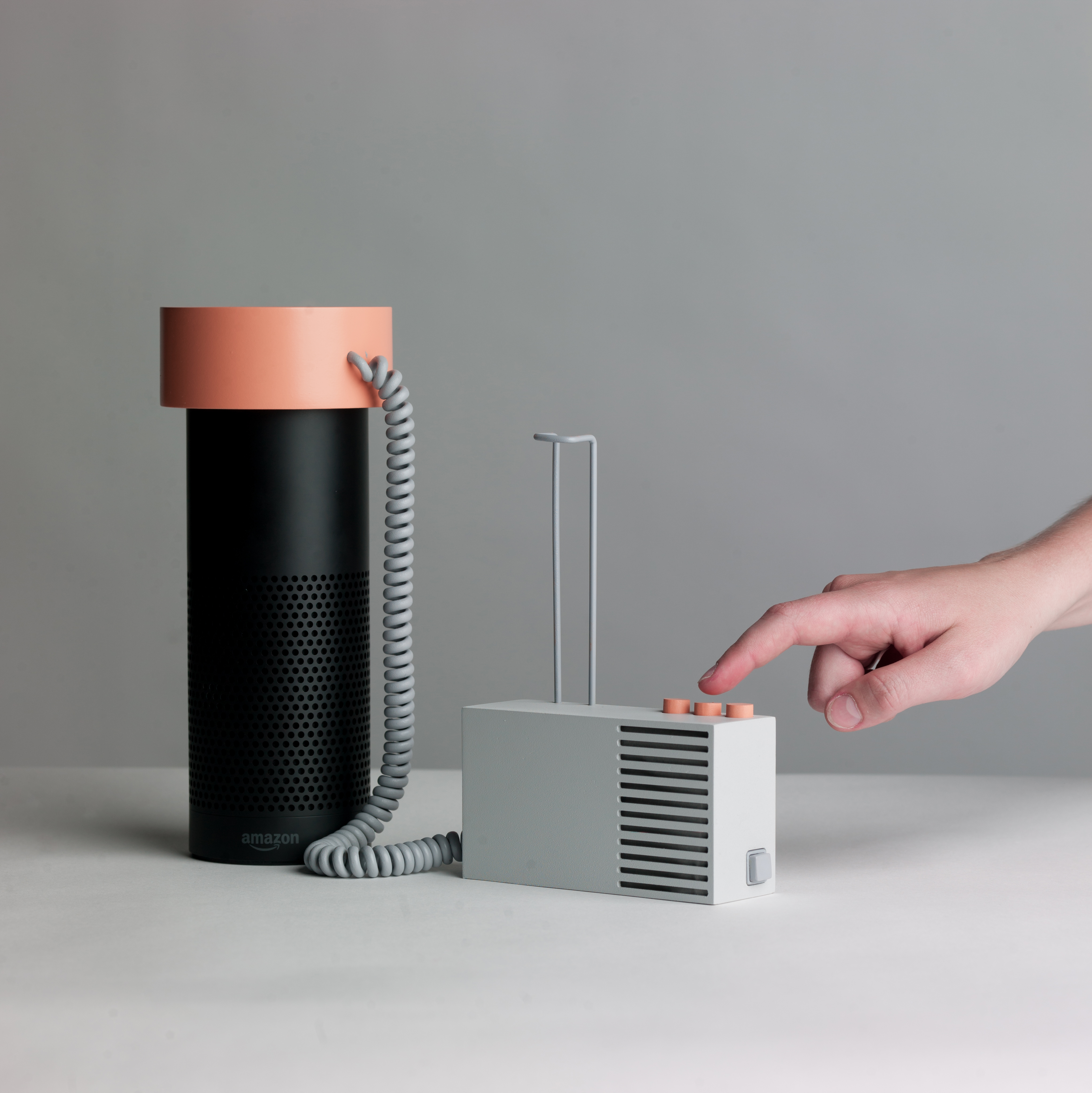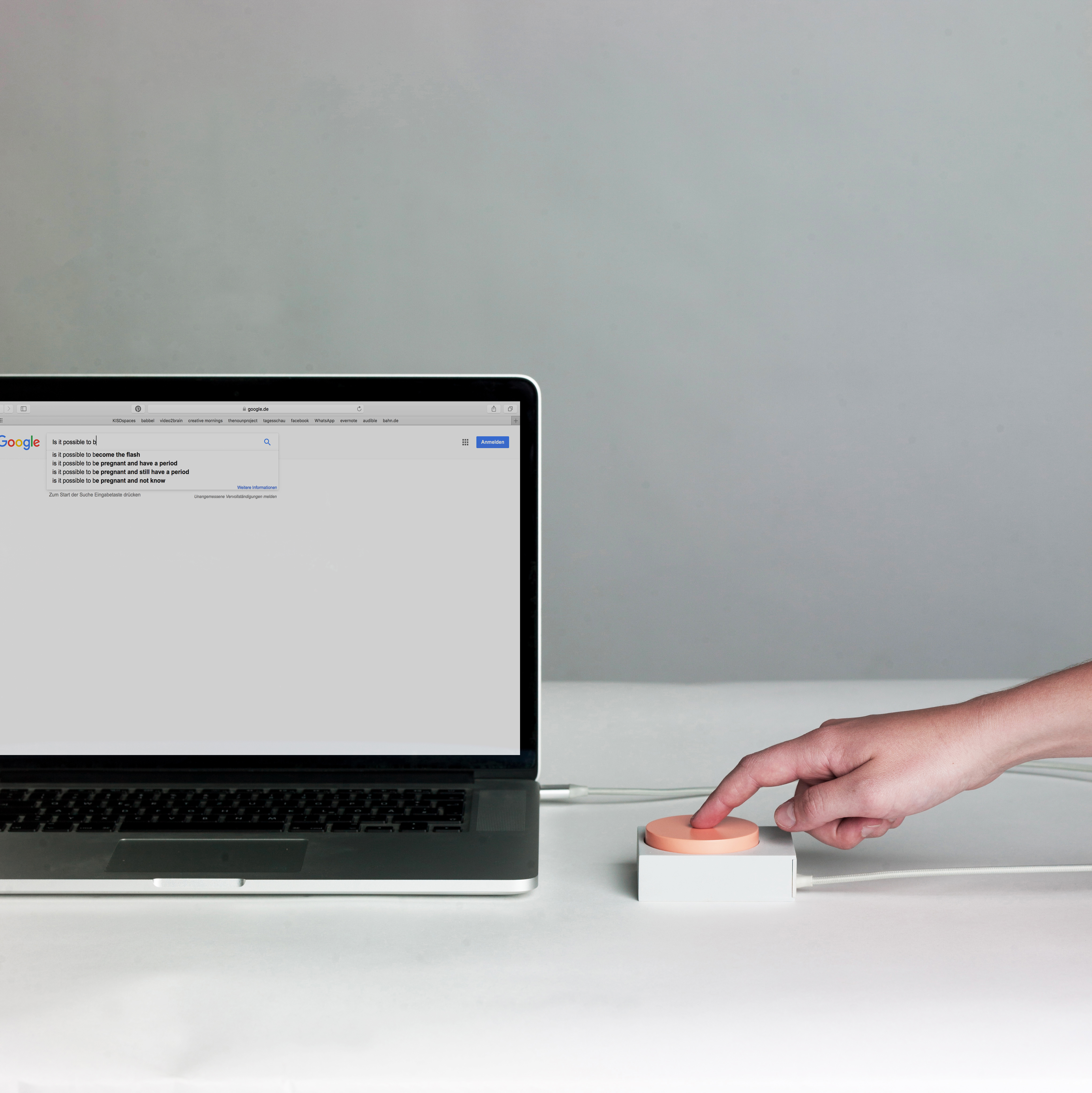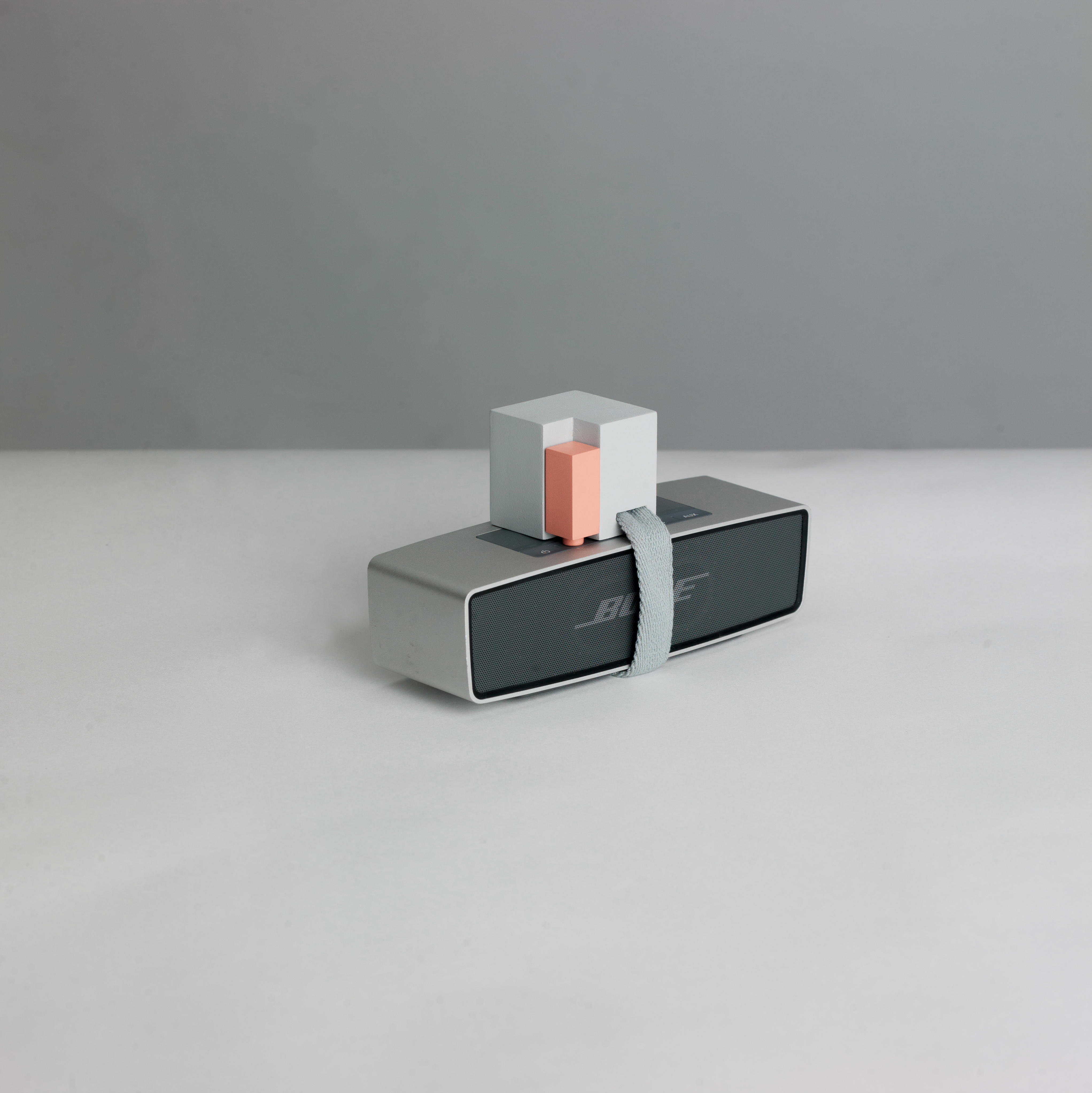Accessories for the Paranoid
2024
- Title
- Accessories for the Paranoid
- Year
- 2024
- Medium / Material / Technic
- 4 Objects; Polystyrene, electronic actors
- Dimensions / Duration
- 4,2 x 4,3 x 3,3 / 16,5 x 22,5 x 13,5 / 3,2 x 7,8 x 8,2 cm / 5 x 4,5 x 5 cm
Do we have to give our personal data to big tech companies without resistance? »Accessories for the Paranoid« help obscure our digital identities.
Our digital environment collects an increasing amount of personal information. And despite tighter privacy policies, tech companies have found a way to circumvent our civil right to privacy. To use digital services at all, we must cede control of much of our own data.
Through four “parasitic” objects, Katja Trinkwalder and Pia-Marie Stute explore alternative approaches to data security. By generating random data, systems are misled: the webcam that watches us, Amazon’s voice assistant (Alexa), the large platforms that track our respective locations, and a speaker that analyzes our user behavior. Thus, »Accessories for the Paranoid« is an act of self-empowerment in a data-driven economy and represents the need to regain control over our personal data.
Object A: Un-hacking webcams
It is easy to hack a webcam and it is easy to fool it: Object A, which is plugged onto the webcam, consists of a toy camera. The users can use a small dial to choose between four photos that show random interiors.
Object B: Kidding Alexa
Object B is an audio device that feeds Amazon's voice assistant Alexa with false information in various ways: It optionally generates "white noise," a sound that doesn’t any information through, or it keeps Alexa busy with useless tasks or dialogs from movie scenes.
Object C: Leaving fault traces
Connected to any computer, Object C generates fake online data. At the push of a button, it independently surfs the websites of Google, Facebook, YouTube, Twitter, or Amazon and creates page-specific content, e.g., a random wish list on Amazon or unspecific likes on social media.
Object D: Blurring use patterns
Connected to any device capable of collecting data, Object D pushes their buttons randomly. It thus generates distorted usage patterns during the night or when no one is at home.
